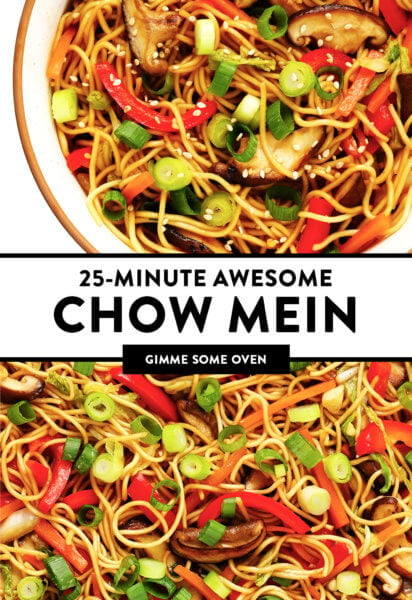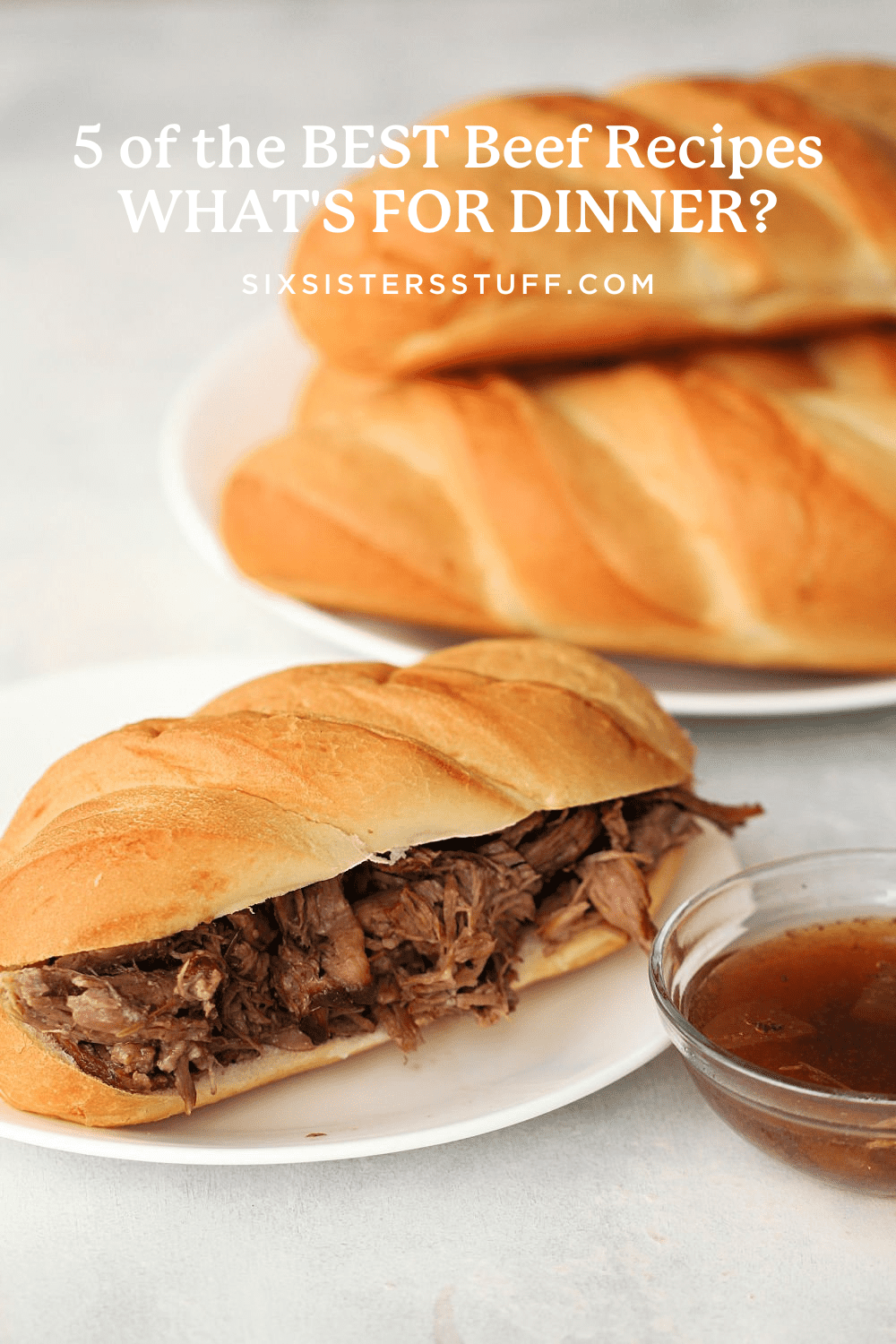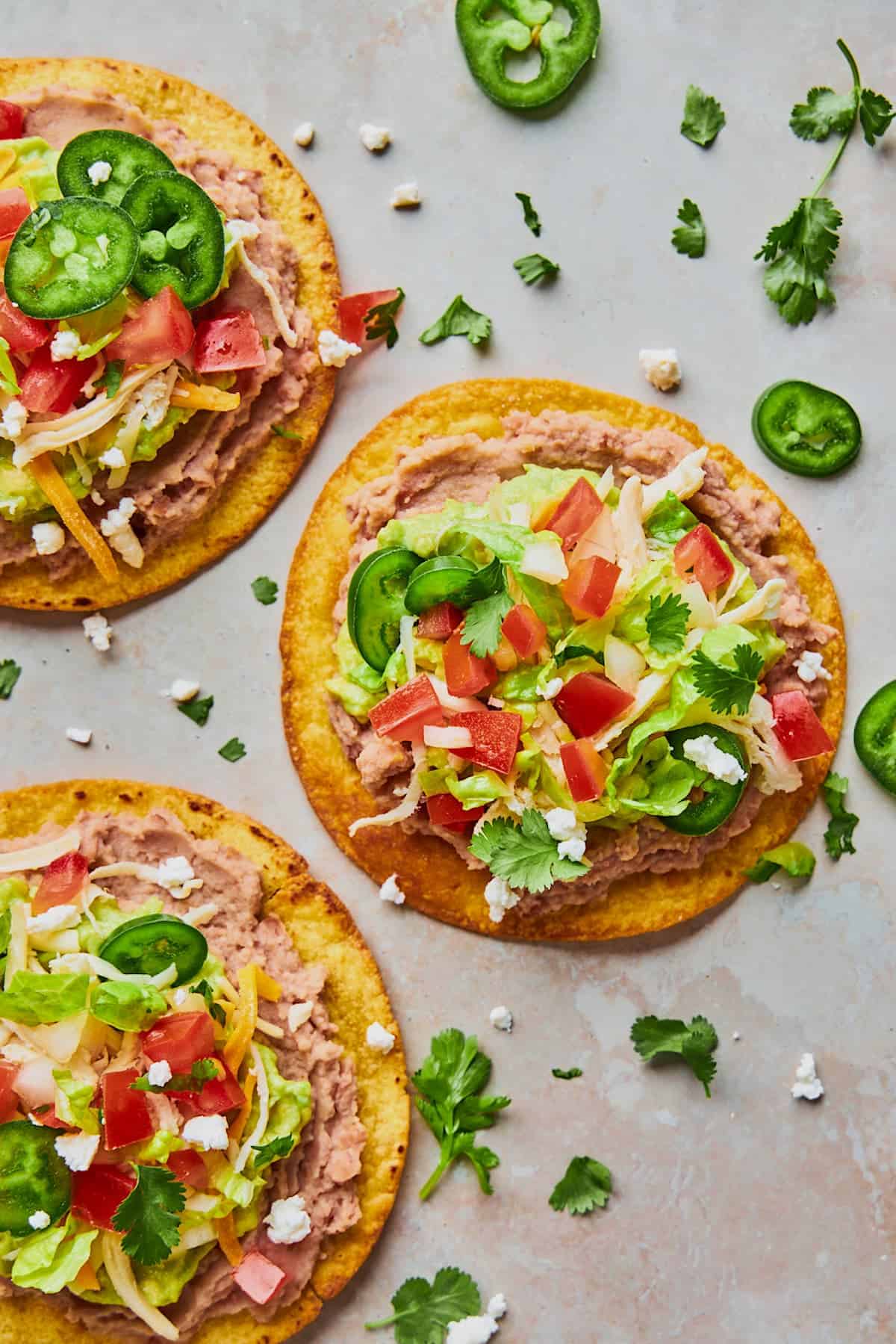This post may contain affiliate links. Please read my disclosure policy.
My favorite chow mein recipe is easy to whip up in just 25 minutes and tossed with a seriously awesome stir-fry sauce. Feel free to add meat, seafood, tofu, and/or whatever extra veggies you might like!
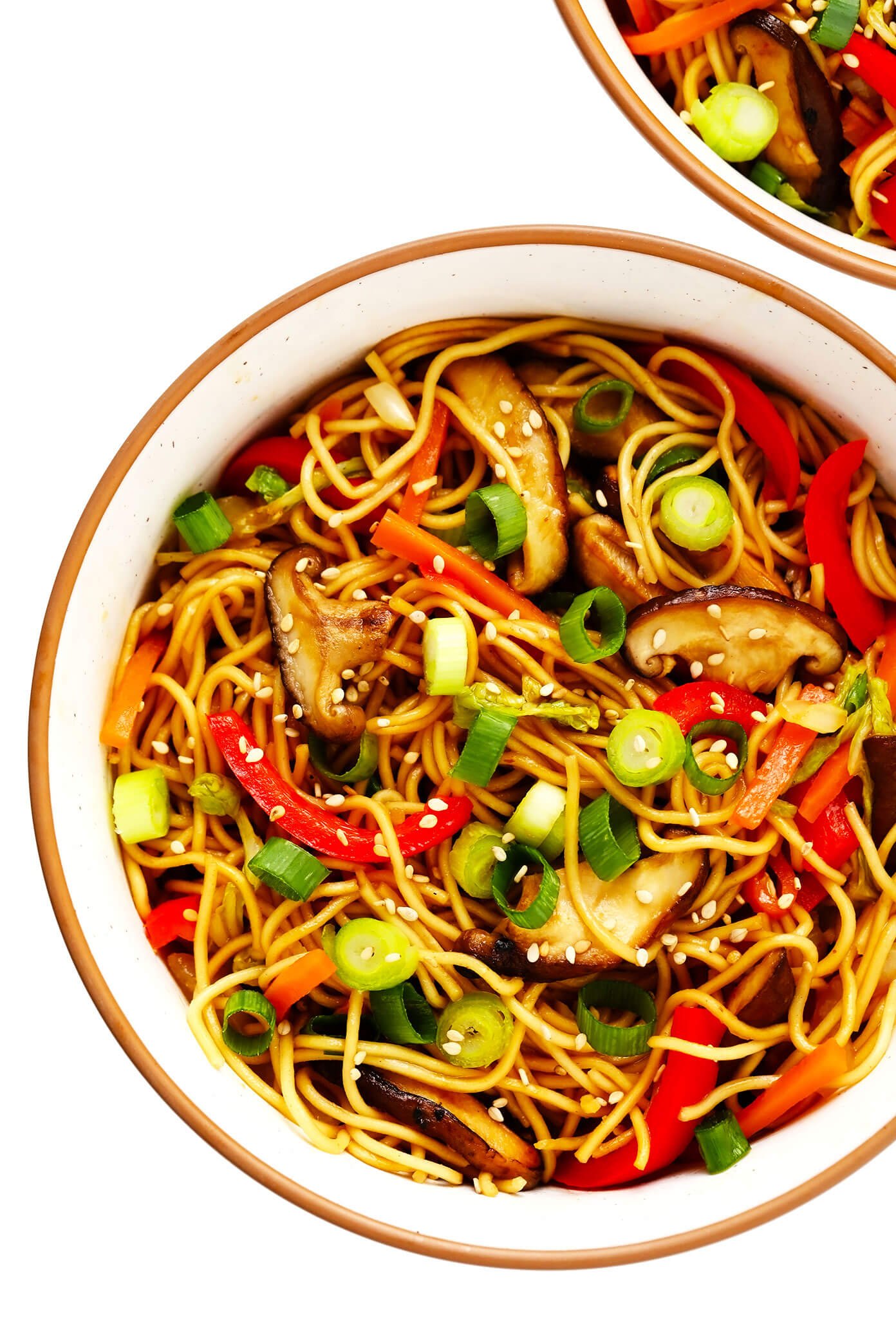
Because quick and easy stir-fried noodles are always a winner on busy weeknights — I have a new chow mein recipe for you guys today! ♡
I have to admit that I’ve always had a bit of a complicated relationship with ordering chow mein in Chinese-American restaurants over the years. I absolutely love this dish. But half of the time, it seems like the stir-fry sauce tossed with the noodles is — to use a word that we say in our house — “whelming.” Not over- or underwhelming, just kind of boring, which I always think is a missed opportunity when it comes to noodles!
So for any of you other chow mein fans out there, I thought I would share my recipe for this comfort food that is always a winner. First and foremost, of course, I like to go big with a blend of my favorite full-flavored, savory ingredients when it comes to the stir-fry sauce used in chow mein. I also like a very high ratio of veggies to noodles, adding in whatever fresh veg and greens happen to be hanging out in the crisper drawer that day. (And if we happen to feel like adding some protein, it’s incredibly easy to add some stir-fried chicken, beef, pork, shrimp, tofu too.) I’m also a big believer that chow mein noodles should have a firm al dente texture, so it’s important to slightly undercook them before adding them to the stir-fry so that they can finish cooking with the veggies and sauce. And finally, I like to add a good spoonful of hot chili sauce to give my noodles a kick, although it is optional in the recipe if you prefer to keep your chow mein more on the mild side.
The great news for all of us is that chow mein recipe can be whipped up in just 25 minutes from start to finish (the noodles cook very quickly!), making this an awesome back-pocket recipe to pull out on busy weeknights. It also makes for great leftovers, if you would like to make a double batch while you’re at it. And as always, I have included lots of options below for how to make this recipe gluten-free and vegan too.
So clean out the crisper drawer and round up whatever veggies you have on hand, and let’s make some seriously awesome chow mein together!

Chow Mein Ingredients:
Before we get to the full recipe below, here are a few important notes about the ingredients you will need to make this easy chow mein recipe:
- Chow mein noodles: I prefer to make my chow mein with dried Chinese egg noodles, which are usually labeled as “chow mein noodles,” “stir-fry noodles” or “lo mein noodles” in American grocery stores. (Look for the long noodles and avoid buying the short canned chow mein noodles like these, which confusingly have the same name but are used more as a salad topping.) That said, this chow mein recipe can really be made with just about any type of noodles that you prefer. So while it may be a bit non-traditional, any other sort of egg noodles, rice noodles, or pasta noodles (such as spaghetti) would work just fine too.
- Veggies: As I mentioned above, just about any stir-fry friendly veggies will work in this recipe. So go for a quick scavenger hunt in your crisper drawer and please feel free to use what you have! I used a simple mix of carrots, red bell pepper and shiitake mushrooms in the photos here. But any other types of mushrooms, asparagus, onions, broccoli, snow or snap peas, green beans, bean sprouts, etc would also be delicious!
- Greens: I also went the traditional route and added a bunch of chopped Napa cabbage to the stir-fry. But feel free to add in whatever kind of chopped green cabbage you prefer (or you could save a step and just purchase a bag of cole slaw), or you could use baby spinach, kale, collards or other greens instead.
- Garlic and ginger: I’m also a big believer in using lots of fresh garlic and ginger in this recipe, which really amp up the flavor. But if you don’t have fresh ginger on hand, you could alternately add 1 teaspoon of ground ginger to the stir-fry sauce instead.
- Scallions: I also love adding lots of chopped scallions in my noodles. I typically just use the white parts of the scallions as my onions for this recipe, and sauté them along with the veggies, and then use the green parts to sprinkle on top to add some crisp, fresh of onion flavor to each bite. Don’t be shy with these green onions — they really add a lot here!
- Stir-fry sauce: Finally, I use a 5-ingredient stir-fry sauce in this recipe made with low-sodium soy sauce, oyster sauce, shaoxing wine, toasted sesame oil, and a generous pinch of white pepper (or a few generous cracks of black pepper). If you don’t have shaoxing wine (also often labeled as Chinese cooking wine) in your kitchen, you can substitute mirin, sherry, sake, or a sweeter white wine instead. Or if you do not cook with alcohol, you can substitute some veggie stock or a splash of apple juice instead. But I have to say that if you love southeast Asian cooking, I really, really recommend picking up a bottle for your kitchen! Its complex, sweet flavor is that je ne se quoi ingredient that makes this dish taste like the good chow mein you can find in Chinese-American restaurants, and can be used in all sorts of other recipes as well. Feel free to also add some of your favorite chili sauce if you would like to give the stir-fry sauce some heat too.
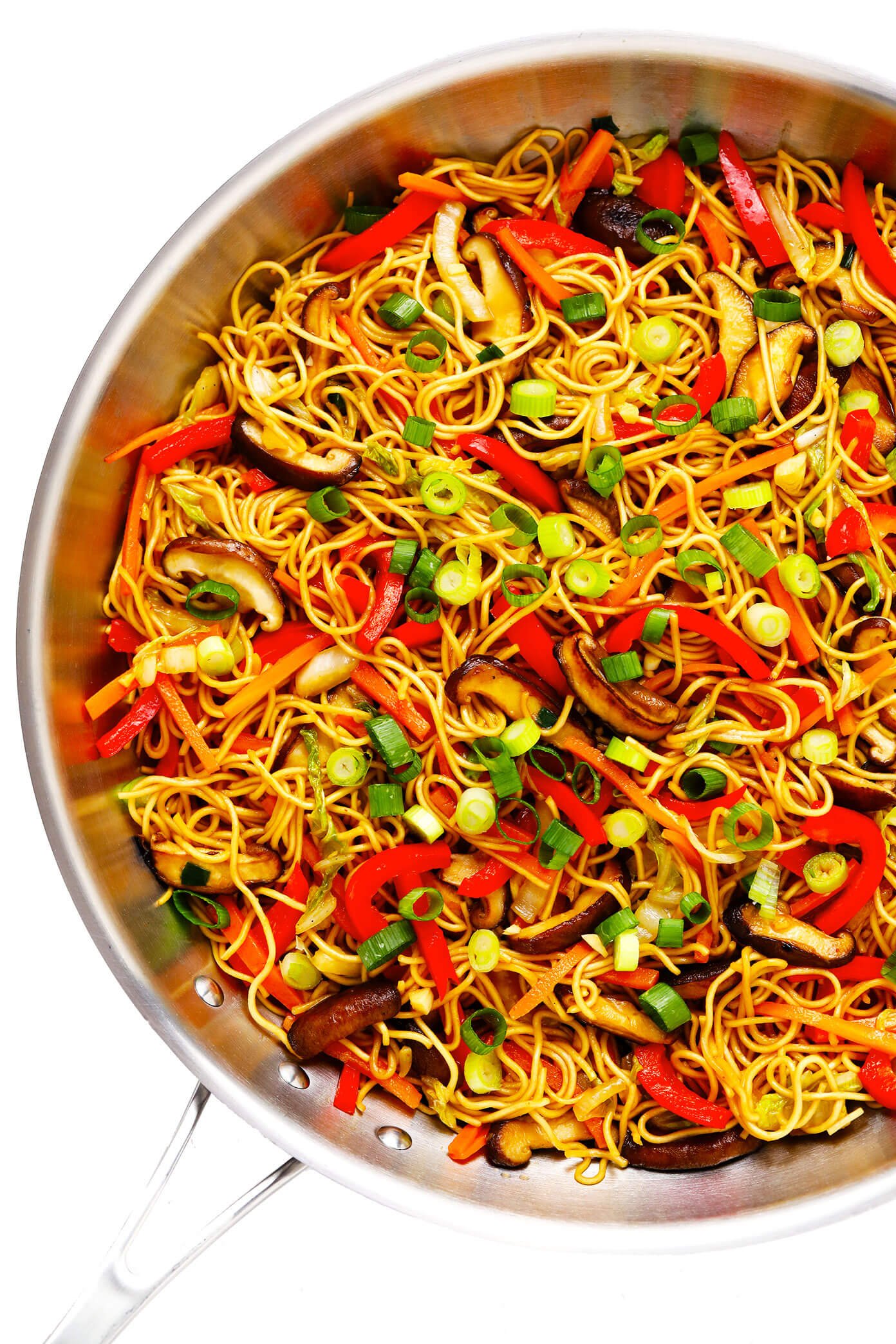
Tips For How To Make Chow Mein:
The full recipe is included below, but here are a few quick tips to keep in mind for how to make the best chow mein:
- Prep your ingredients in advance: Things move quite quickly once you begin to stir-fry the veggies. So I recommend having the sauce mixed and all of your veggies/garlic/ginger chopped and ready to go before you begin the stir-fry.
- Multi-task or single-task the noodles and veggies: Up to you! If you really want to save time, you can boil the noodles while you sauté the veggies. Or if keeping track of the timing seems stressful, feel free to boil, rinse and drain the noodles in advance. (If you do cook the noodles in advance, I recommend tossing them with a bit of oil to prevent them from sticking while they wait.)
- Use a very hot pan for the stir-fry: The veggies and noodles are meant to sear quickly (not slowly steam) in this recipe. So crank up the heat and move quickly!
- Try not to overcook the noodles: The cooking time recommendations on most noodle packages will yield noodles that are completely al dente or a bit overcooked. I recommend tasting the noodles as they go. Then drain them a minute or so before they reach al dente. (The noodles will finish cooking in the stir-fry.)
- Don’t forget to taste and season the sauce: Give the noodles a quick taste before serving them to see if they need extra soy sauce, sesame oil and/or pepper. Everyone has different flavor preferences here, so add these ingredients to taste.

Chow Mein Recipe Variations:
As I mentioned above, there are endless ways to customize this chow mein recipe to your liking…so please have fun and get creative! For example, feel free to…
- Add a protein: Feel free to add in some extra cooked protein of your choice to make either chicken chow mein, beef chow mein, pork chow mein, shrimp chow mein, tofu chow mein, or whatever sounds good. I would recommend simply sautéing your protein in oil and then transferring it to a clean plate before you begin to sauté the veggies, then you can add the protein back in just before serving.
- Add extra (or different) veggies: Any stir-fry-friendly veggies will also work in this recipe, so please use whatever sound good to make this vegetable chow mein.
- Use different noodles: As mentioned above, this recipe can work with just about type of noodles. So feel free to use whatever you have on hand.
- Make it gluten-free: If you would like to make gluten-free chow mein, be sure to use gluten-free noodles (egg noodles, rice noodles, or whatever noodles you prefer). Then you will also need to use gluten-free tamari and gluten-free oyster sauce as well.
- Make it vegetarian/vegan: If you would like to make 100% vegetarian or vegan chow mein, be sure to use a vegan “oyster” sauce instead.
- Make it spicy: I also really love adding in some chili garlic sauce or Sriracha to give this recipe some heat, if you like your noodles to be a bit spicy.
Chow Mein vs Lo Mein:
Also, a quick word to address the question that many of you may be wondering — exactly what’s the difference between chow mein and lo mein? Well, to be honest, there are hundreds of contrasting opinions out there on the internet about exactly how each dish is defined. And the interpretations of these dishes also vary from region to region in China, and have evolved to mean many different things in countries around the world in the past few decades. So in all honesty, the answer to this question can completely depend who you ask. ♡
What I do know is that the words chow mein (chāu-mèn; 炒麵) originally translate in Cantonese to mean “stir-fried noodles.” Growing up in the United States, I was introduced to the two main varieties of Chinese-American-style chow mein — “soft” chow mein (made with long noodles that are cooked and then stir-fried with the sauce) and “crispy” chow mein (also called Hong Kong-style, made with fried flat noodles, served strained and then topped with sauce). Today’s recipe is definitely inspired by Chinese-American soft chow mein. And by contrast to lo mein, which traditionally uses fresh noodles and simply tosses them with sauce, chow mein typically begins by cooking dried noodles and then stir-fries in a hot pan with the sauce.
That said, this chow mein recipe is definitely my own interpretation of the Chinese-American soft chow mein that I ate in the United States growing up. So while I can’t claim that it is necessarily authentic, it tastes super nostalgic and delicious to me!

More Favorite Stir-Fried Noodles:
Looking for more stir-fried noodle recipes to love? Here are a few of my faves!
Description
This quick chow mein recipe is easy to whip up and tossed with a seriously delicious stir-fry sauce. Feel free to add meat, seafood, tofu, and/or whatever extra veggies you might like.
Scale
Ingredients
Stir-Fry Ingredients:
- 6 ounces dried chow mein noodles*
- 2 tablespoons peanut oil (or olive oil)
- 4 cups sliced veggies (I used one bell pepper, one carrot, and 8 ounces shiitake mushrooms*)
- 4 scallions, thinly sliced (white and green parts separated)
- 3 cups shredded green cabbage (I used Napa cabbage)
- 3 large cloves garlic, minced
- 1 tablespoon minced fresh ginger
Sauce Ingredients:
Instructions
- Make the stir-fry sauce. Whisk all of the ingredients together in a small bowl (or shake them together in a covered mason jar) until combined. Set aside until ready to use.
- Par-boil the noodles. Cook the noodles in a large stock-pot of salted water until they are just a minute or so shy of al dente. (You want them to be nearly cooked, but still have a bit of a chewy bite. They will finish cooking later in the sauté pan.) Transfer the noodles to a strainer, rinse with lukewarm water and drain, then set aside until ready to add them to sauté pan below.
- Sauté the veggies. Heat the oil in a large non-stick skillet or wok over high heat. Add the veggies and white parts of the scallions and sauté for 2 to 3 minutes, stirring occasionally, until crisp-tender. Add the cabbage, ginger, and garlic and sauté for 2 more minutes, stirring occasionally, until the cabbage is softened and the garlic is fragrant.
- Combine everything together. Add the cooked noodles to the sauté pan along with the sauce. Cook for 1 to 2 more minutes, tossing the mixture occasionally, until the noodles are al dente.
- Season. Taste the chow mein and add extra soy sauce and/or white pepper, if needed. (I like my noodles salty and peppery so I usually add more of both, but it’s up to you.)
- Serve. Serve immediately, sprinkled with the green parts of the scallions, and enjoy!
Notes
Noodle options: I used traditional Chinese chow mein egg noodles for this recipe, which are usually labeled as “chow mein noodles,” “stir-fry noodles” or “lo mein noodles” in American grocery stores. (Look for the long noodles and avoid buying the short canned chow mein noodles like these, which have the same name but are used more as a salad topping.) That said, feel free to use any type of egg noodles, rice noodles, or pasta noodles that you prefer for this recipe.
Shaoxing wine: Also sometimes labeled as “Chinese cooking wine,” this Chinese rice wine adds really great flavor to this dish and I highly recommend picking up a bottle if you regularly cook stir-fries. That said, if you do not have a bottle, you can sub in mirin, sherry, or a sweet white wine. Or if you prefer not to cook with alcohol, you can just add in some vegetable stock (or even a bit of apple juice) instead.
Make it spicy: If you would like to give these noodles some heat (which I highly recommend), just add your desired amount of chili garlic sauce or Sriracha to the stir-fry sauce.

